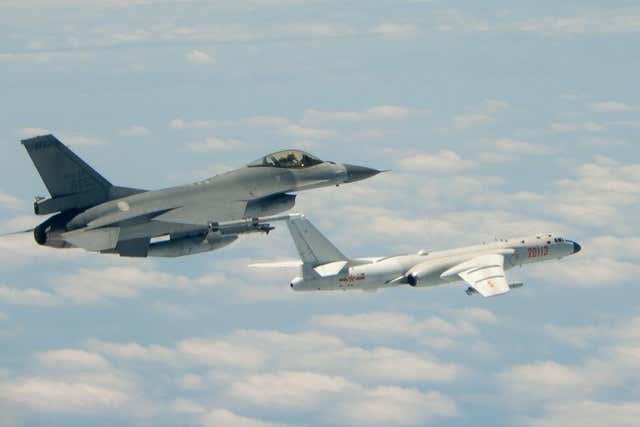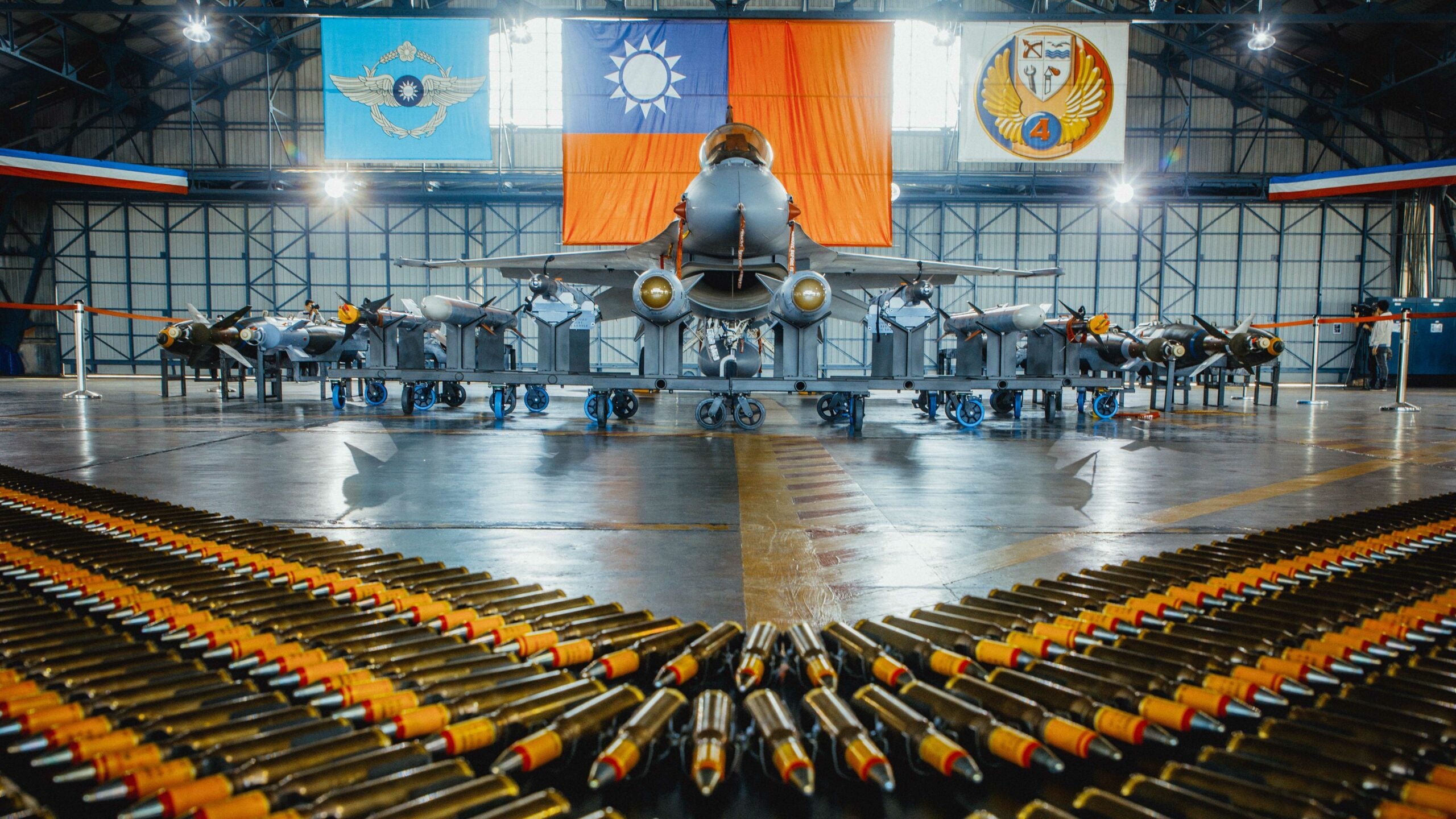Taiwan, the first operator of upgraded F-16V fighter jets, has reportedly declared an initial combat capability for the aircraft and has already begun actively training with them. The upgrade program is now well underway, with more than 22 modernized F-16Vs said to have been delivered to the 4th Tactical Fighter Wing at Chiayi Air Force Base in southwest Taiwan, where the jets are reportedly close to being placed on active alert duty, ready to intercept potential threats to the island.
According to a recent report from Taiwan’s NOWNews, officials from the country’s air force, which is officially called the Republic of China Air Force (ROCAF), have said they will host a ceremony later this month to mark the introduction of the F-16V into service. That ceremony is scheduled to be attended by President Tsai Ing-wen, but in the meantime, the F-16V has already been deemed ready for limited combat operations. It is a significant step toward the modernization of the ROCAF, the F-16 being by far the most capable fighter asset in its current inventory and helping the far smaller air force to keep technological pace with Beijing’s own rapidly developing airpower capabilities.

The ROCAF reportedly now plans to start using the F-16s — alongside F-CK-1 Indigenous Defense Fighters (IDF) — for air defense missions in the southwest of the country, where they will be tasked with intercepting Chinese People’s Liberation Army aircraft entering its southwest Air Defense Identification Zone, or ADIZ.

The 4th Tactical Fighter Wing (TFW) has now upgraded more than 60 percent of its fleet. Originally, Taiwan planned to convert 142 of its existing F-16A/B jets to the much more capable F-16V standard, a number since reduced by one through attrition. Indeed, accidents have curtailed the operations of the non-upgraded F-16 fleet in the recent past, including a fleet-wide grounding last November after one of the jet was lost during a training mission.
Taiwan’s plans to upgrade its F-16s date back over a decade and the U.S. Congress was first notified of a planned Foreign Military Sale back in September 2011, then valued at an estimated $5.3 billion. Among the new equipment specified were active electronically scanned array (AESA) radars, the Link 16 tactical data link, new mission computers, Joint Helmet Mounted Cueing System (JHMCS), and night-vision goggles (NVGs).
In October 2012, Lockheed Martin received a $1.85-billion contract for the upgrade work and the Northrop Grumman AN/APG-83 Scalable Agile Beam Radar (SABR) was chosen the following year. The project was struck a blow, however, when the U.S. Air Force abandoned its parallel Combat Avionics Programmed Extension Suite (CAPES) program to upgrade its own F-16s, forcing Taiwan to take on additional test-related costs.
Lockheed Martin upgraded the initial two ROCAF F-16A/Bs, the first of which took to the air in October 2015, and these served as prototypes, while subsequent modernization work has been undertaken in Taiwan by the Aerospace Industry Development Center (AIDC).
The domestic upgrade effort has not proceeded as quickly as hoped, with software testing delays meaning that AIDC only began work on the first four F-16s in early 2017, with a first test flight the following year.
Since then, the previous Trump administration in the United States has approved the sale of an additional 66 new-build Block 70 F-16C/D jets, which have a similar general configuration to the F-16V, to Taiwan. This deal was among a raft of other defense sales to the island nation that were part of efforts to expand the U.S. government’s relationship with authorities in Taipei. Taiwan’s plans to acquire more new-build F-16s actually date back even further than the F-16V upgrade program, with a request to Washington as long ago as 2006. This and other requests were turned down, until the Trump administration finally consented in 2019, approving a package worth an estimated $8 billion.

While the first of the new-build Block 70 F-16C/Ds are scheduled to arrive in 2023, in the meantime, the ROCAF’s upgraded F-16Vs (which it refers to as the F-16A/B Block 20 MLU) are set to play a vital role, not only for air defense but also for a range of offensive missions, including anti-shipping, for which they can be armed with the AGM-84 Harpoon missile.
The importance of airpower assets to patrol Taiwan’s ADIZ is reflected by the recent intense activity here, including a notable uptick in Chinese military aviation movements in this area of the northern end of the South China Sea just earlier this year. The Taiwanese Ministry of Defense announced that eight Chinese aircraft, including fighter jets, maritime patrol, and surveillance types, had flown into the southwestern corner of the ADIZ in a two-day period, from January 31 to February, an episode that you can read more about here.

The strategic backdrop to this is Beijing’s continued claims on Taiwan, which it sees as an integral part of its territory and has repeatedly threatened military action if officials there declare full independence from the mainland. Meanwhile, the United States has officially pursued a “one China” policy that falls short of recognizing Taiwan’s independence, but which includes engaging with its officials and supporting the Taiwanese armed forces.
Should there ever be open conflict between China and Taiwan, the respective aviation elements would be expected to play a major role, with the far smaller ROCAF expected to try and use its airpower alongside coastal defense cruise missiles, multiple rocket launchers, and attack helicopters to counter a potential invasion force. Air defense operations by the ROCAF would seek to protect the critical command and control infrastructure, early-warning radars, airstrips, and air defense batteries that would likely bear the brunt of China’s offensive operations.

While the South China Sea is itself hotly contested, with Beijing making expansive claims over most of this body of water, the situation is also made more complicated by Beijing’s establishment of man-made island outposts in the area, many of which include ground-based anti-ship and anti-aircraft missiles as part of a wider anti-access and area denial posture.
The challenges involved in defending Taiwan are clearly enormous, but the fielding of the upgraded F-16V — and the forthcoming arrival of new-build aircraft of the same type — will at least ensure that the country’s air force can continue to modernize in the face of a growing military challenge from Beijing.
Contact the author: thomas@thedrive.com
